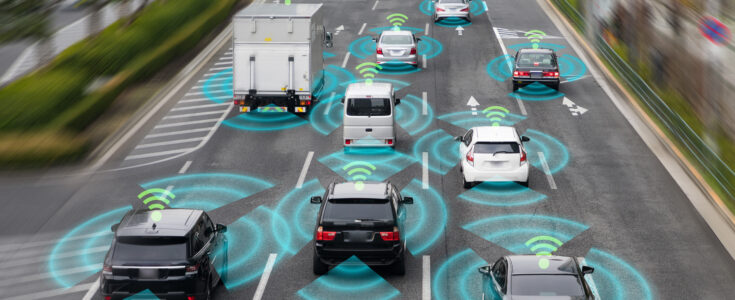

The era of the smart car has officially arrived. With new apps and capabilities popping up every day, the connected car is quickly becoming the only kind of car. People now expect their automobile to know where they are going, who they’re talking to on the way there, what they need when they get to their destination, and when they are getting home — all while keeping them safe on the road, of course.
There are so many ways to benefit from car connectivity. Companies can now track fleet workers’ routes to make them more efficient and to better plan their journey, taking into account traffic patterns and identifying where any traffic issues crop up. Another great benefit of car connectivity is that we can now monitor the activity of drivers to see if they are driving safely — in fact, a lot of insurance companies are already doing this and offering discounts to safe drivers.
While the world of connected cars is very exciting and has a growing number of uses, it also brings with it a host of problems for app developers. One of these issues is fragmentation. Not every app will work on every car. App developers need to make their apps as device-agnostic as possible to help avoid this issue. As a VisionMobile report highlights, “Developers are faced by enormous fragmentation, small addressable markets and high friction in the distribution and monetization of their software.”
In addition, the development time for cars is much longer than for mobile apps. While new features and upgrades are provided on an almost constant basis for smartphones, for cars the process takes much longer. In fact, car manufacturers have five-year lifecycles for new automobile designs. So, the app that works on your car today might not work on the car of five years from now.
However, car manufactures are solving this problem by turning to smartphones to drive innovation forward. While most people swap out their cars infrequently, they get new smartphones about every two years — making the smartphone the ideal target for car app innovation.
Knowing that the smartphone is the key to innovation in the connected car universe, developers should be aware that it’s more important than ever to create new apps for the smartphone to connect with smart cars. But what is the best way to go about creating these apps?
According to a report from Developer Economics, there are four different ways to develop apps for connected cars. They state in their report that “If you want to build an in-vehicle infotainment app, you can run it either on the car’s head unit (the dashboard) or run your app on a mobile device (smartphone or tablet) that is linked with the car. In the latter case, your app’s UI can be mirrored on the dashboard screen using APIs like Mirrorlink or CarPlay. If you want to make an app (in the car, in the cloud or on any device) that uses data from the car, you can use a car maker’s vehicle data API or access the On-Board Diagnostics port (OBD-II) using a bluetooth dongle.” Clearly, there is a lot to think about before even starting the development of a connected car app. The Developer Economics report also notes that there are many different paths to market for car apps, and warns about the safety concerns involved when creating mobile apps for cars.
However, it’s not all obstacles ahead for app developers looking to make a move into the connected car space. With Apple’s CarPlay and Google’s Open Automotive Alliance (and perhaps to a lesser extent Windows in the Car), we are now reaching a tipping point in the industry. Apple and Google are two companies that have extensive expertise in solving fragmentation, in building developer communities, and in empowering developers to add value. It’s possible that Apple and Google will clear out the existing car app platforms with one overarching, over-the-top solution — much like they did in the smartphone world. Developers only have exciting times and new possibilities to look forward to.
To learn more about Apexon’s work with connected cars, click here to see our connected car infographic.
The trends toward connectivity and mobility are converging at lightning speed in the connected car industry. For automotive manufacturers, the connected car represents an...
When most people talk about self-driving cars, they envision a future that’s a long way off from the gridlocked reality of so many urban scenes today. “Sure, the robots will...
It has been a big week in tech. Not only did we have the Google I/O keynote yesterday (last week’s blog covered that in more detail), but also Kleiner Perkins Caufield &...